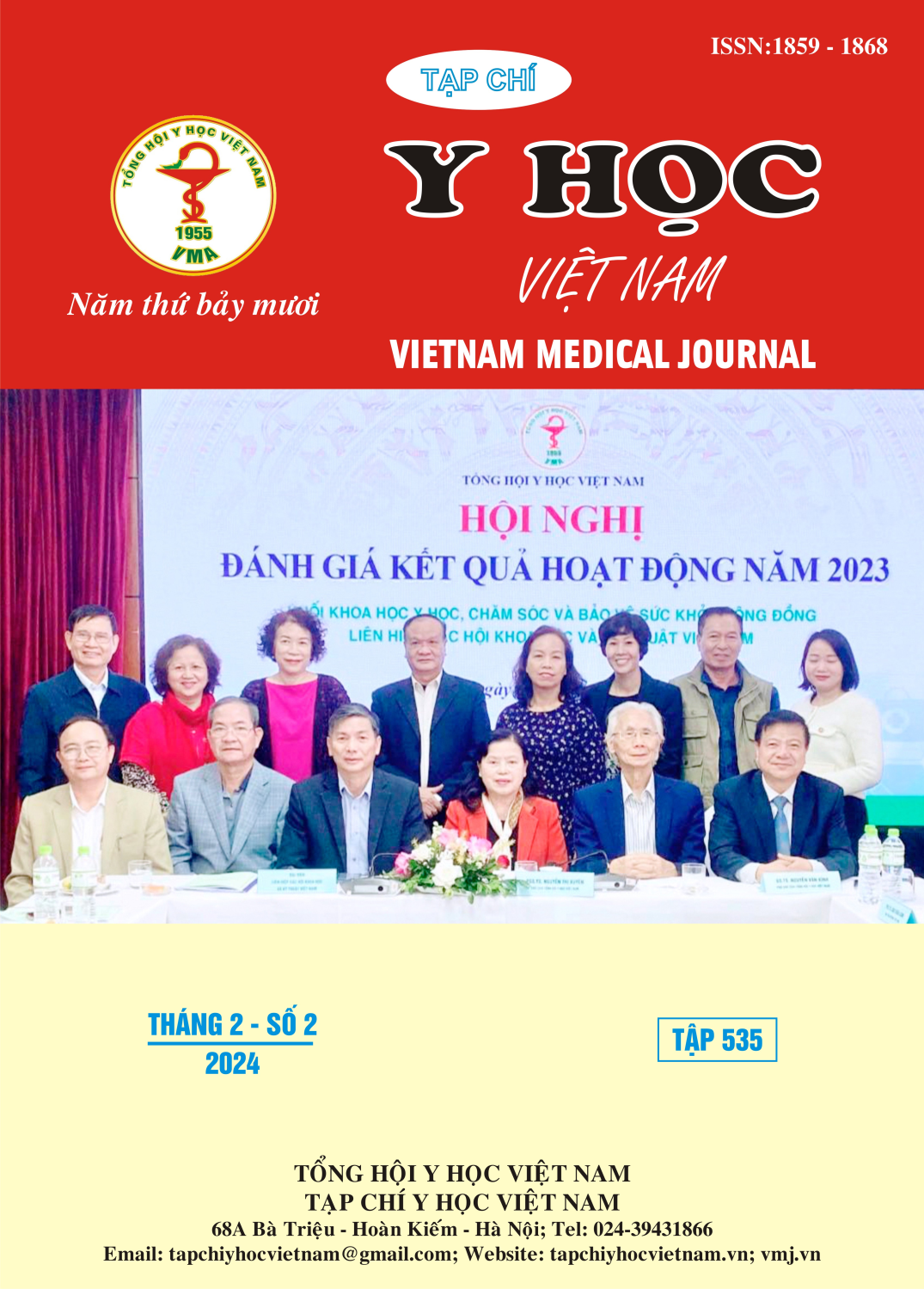PHÂN TÍCH CHI PHÍ – HIỆU QUẢ CỦA EDOXABAN TRONG ĐIỀU TRỊ RUNG NHĨ KHÔNG DO VAN TIM TẠI VIỆT NAM
Nội dung chính của bài viết
Tóm tắt
Đặt vấn đề: Edoxaban là thuốc chống đông đường uống thế hệ mới được phê duyệt để phòng ngừa đột quỵ và thuyên tắc hệ thống ở người bệnh rung nhĩ không do van tim (nonvalvular atrial fibrillation – NVAF) và điều trị thuyên tắc huyết khối tĩnh mạch (venous thromboembolism – VTE). Bên cạnh hiệu quả lâm sàng, tính chi phí - hiệu quả (CP – HQ) cần được cân nhắc trong chỉ định thuốc trên lâm sàng với ngân sách y tế hạn hẹp. Do đó, phân tích CP – HQ edoxaban là cần thiết trong bối cảnh nhiều nghiên cứu tương tự đã được tiến hành trên thế giới nhưng chưa có nghiên cứu nào được thực hiện tại Việt Nam. Phương pháp nghiên cứu: Phân tích CP – HQ với thiết kế nghiên cứu mô hình hóa bằng mô hình Markov trên quan điểm cơ quan chi trả BHYT Việt Nam với các thông số đầu vào được trích xuất từ các nghiên cứu lâm sàng, tổng quan y văn, tham vấn ý kiến chuyên gia và kết quả đấu thầu thuốc tại thời điểm nghiên cứu. Kết quả: So với rivaroxaban, người bệnh NVAF điều trị với edoxaban có số năm sống có chất lượng (quality adjusted life years – QALY) cao hơn ở mức chi phí thấp hơn trên toàn thời gian sống của người bệnh. So với dabigatran, edoxaban tiết kiệm chi phí và làm giảm QALY, cụ thể với mỗi QALY giảm đi, chi phí được tiết kiệm đạt 322,37 triệu VND. Kết luận: Trên quan điểm của cơ quan chi trả BHYT Việt Nam, so với ngưỡng chi trả 3 lần GDP, edoxaban vượt trội so với rivaroxaban và đạt CP – HQ so với dabigatran.
Chi tiết bài viết
Tài liệu tham khảo
2. A. M. Ajabnoor, Zghebi, Salwa S., Parisi, Rosa et al., "Incidence of nonvalvular atrial fibrillation and oral anticoagulant prescribing in England, 2009 to 2019: A cohort study," PLoS medicine, vol. 19, no. 6, p. e1004003, 2022.
3. M. Y. Bertram, Lauer, Jeremy A., Stenberg, Karin et al, "Methods for the economic evaluation of health care interventions for priority setting in the health system: an update from WHO CHOICE," International Journal of Health Policy and Management, vol. 10, no. 11, p. 673, 2021.
4. L. Claxton, Taylor, M., Lewis, L. et al, "Cost-Effectiveness Of Edoxaban Compared With Other Licensed Noacs For The Prevention Of Stroke And Systemic Embolic Events In The Uk," Value in Health, vol. 18, no. 7, p. A396, 2015.
5. M. F. Drummond, Sculpher, Mark J., Claxton, Karl et al, Methods for the economic evaluation of health care programmes. Oxford university press, 2015.
6. R. Hutubessy, Chisholm, Dan, Edejer, Tessa Tan-Torres et al, "Generalized cost-effectiveness analysis for national-level priority-setting in the health sector," Cost effectiveness and resource allocation, vol. 1, pp. 1-13, 2003.
7. M. Krejczy, J. Harenberg, M. Wehling, K. Obermann, and G. Y. H. Lip, "Cost-effectiveness of anticoagulation in patients with nonvalvular atrial fibrillation with edoxaban compared to warfarin in Germany," BioMed research international, vol. 2015, 2015.
8. I. Lekuona, Anguita, Manuel, Zamorano, José Luis et al, "Would the use of edoxaban be cost-effective for the prevention of stroke and systemic embolism in patients with nonvalvular atrial fibrillation in Spain?," Revista Española de Cardiología (English Edition), vol. 72, no. 5, pp. 398-406, 2019.
9. G. Y. H. Lip, Mitchell, Stephen A., Liu, Xianchen et al, "Relative efficacy and safety of non-Vitamin K oral anticoagulants for non-valvular atrial fibrillation: Network meta-analysis comparing apixaban, dabigatran, rivaroxaban and edoxaban in three patient subgroups," International Journal of Cardiology, vol. 204, pp. 88-94, 2016. [Online]. Available: https://www.internationaljournalofcardiology.com/article/S0167-5273(15)30893-7/fulltext.
10. J. D. Miller, Ye, Xin, Lenhart, Gregory M. et al, "Cost-effectiveness of edoxaban versus rivaroxaban for stroke prevention in patients with nonvalvular atrial fibrillation (NVAF) in the US," ClinicoEconomics and Outcomes Research, pp. 215-226, 2016.
11. C. Rognoni, Marchetti, Monia, Quaglini, Silvana et al, "Edoxaban versus warfarin for stroke prevention in non-valvular atrial fibrillation: a cost-effectiveness analysis," Journal of thrombosis and thrombolysis, vol. 39, pp. 149-154, 2015.
12. M. Sussman, Di Fusco, Manuela, Tao, Charles Y. et al, "The IMPact of untReated nOn-Valvular atrial fibrillation on short-tErm clinical and economic outcomes in the US Medicare population: the IMPROVE-AF model," Journal of Medical Economics, vol. 24, no. 1, pp. 1070-1082, 2021.
13. S. N. S. Yarrarapu, Shah, Parth, Iskander, Beshoy et al, "Epidemiology, trends, and utilization disparities of catheter ablation and its association with coronary vasospasm in non-valvular atrial fibrillation: a nationwide study," CHEST, vol. 164, no. 4, pp. A374-A375, 2023.
14. H. Zhou, Nie, Xiaoning, Jiang, Minghuan et al, "Cost‐effectiveness of anticoagulants for preventing stroke in patients with non‐valvular atrial fibrillation in mainland China," Journal of Clinical Pharmacy and Therapeutics, vol. 47, no. 4, pp. 523-530, 2022.


